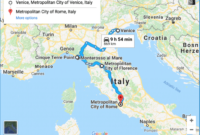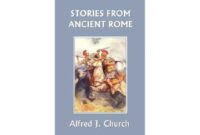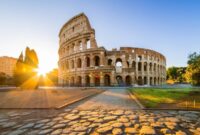Embark on a captivating journey through the annals of Rome, where history, mythology, and culture intertwine to create a tapestry of grandeur and intrigue. From the rise of the Roman Empire to its eventual fall, stories of Rome captivate the imagination, offering invaluable lessons about the human experience.
As we delve into the heart of the Eternal City, we will explore the pivotal events that shaped its destiny, unravel the secrets of Roman mythology and religion, and encounter the legendary emperors who left an indelible mark on the world.
Historical Events in Rome
The history of Rome is a long and eventful one, spanning over two thousand years. From its humble beginnings as a small village on the banks of the Tiber River, Rome grew into a vast empire that ruled over much of Europe, North Africa, and the Middle East.
The history of Rome can be divided into three main periods: the Kingdom of Rome (753-509 BC), the Roman Republic (509-27 BC), and the Roman Empire (27 BC-476 AD).
The Kingdom of Rome
The Kingdom of Rome was founded in 753 BC by Romulus and Remus, twin brothers who were raised by a she-wolf. The kingdom was ruled by a series of seven kings, the most famous of whom was Numa Pompilius, who established many of the religious and political institutions of Rome.
The Roman Republic
The Roman Republic was founded in 509 BC after the overthrow of the last king of Rome, Tarquin the Proud. The republic was ruled by a series of elected officials, including consuls, senators, and tribunes.
The Roman Republic was a period of great expansion and conquest. The Romans conquered much of Italy, as well as parts of Greece, North Africa, and Spain.
The Roman Empire
The Roman Empire was founded in 27 BC by Augustus Caesar, who became the first emperor of Rome. The empire continued to expand under Augustus and his successors, reaching its greatest extent in the 2nd century AD.
The Roman Empire was a period of great prosperity and cultural achievement. The Romans built roads, aqueducts, and other public works that improved the lives of their citizens.
The Fall of the Roman Empire
The Roman Empire began to decline in the 3rd century AD. The empire was plagued by a series of economic, political, and military problems. In 476 AD, the last Roman emperor, Romulus Augustulus, was overthrown by the Germanic leader Odoacer.
Roman Mythology and Religion
Roman mythology and religion played a significant role in shaping the culture, society, and art of ancient Rome. The Romans adopted many gods and goddesses from the Greek pantheon, adapting them to their own beliefs and traditions.
Major Gods and Goddesses
The major gods and goddesses of Roman mythology included:
- Jupiter: King of the gods, god of the sky and thunder.
- Juno: Queen of the gods, goddess of marriage and childbirth.
- Mars: God of war and agriculture.
- Minerva: Goddess of wisdom and war.
- Apollo: God of music, poetry, and healing.
- Diana: Goddess of the hunt and the moon.
- Neptune: God of the sea.
- Pluto: God of the underworld.
li> Venus: Goddess of love and beauty.
Influence on Roman Society and Culture
Roman religion had a profound impact on Roman society and culture. Religious festivals and ceremonies were an integral part of public life, and the gods and goddesses were often invoked in prayers, oaths, and curses. The Romans believed that the gods controlled all aspects of life, from birth and death to victory in war.
Roman religion also influenced Roman art and literature. Many Roman temples, statues, and paintings depicted the gods and goddesses, and their stories were often told in poetry, drama, and historical accounts.
Roman Emperors and Rulers
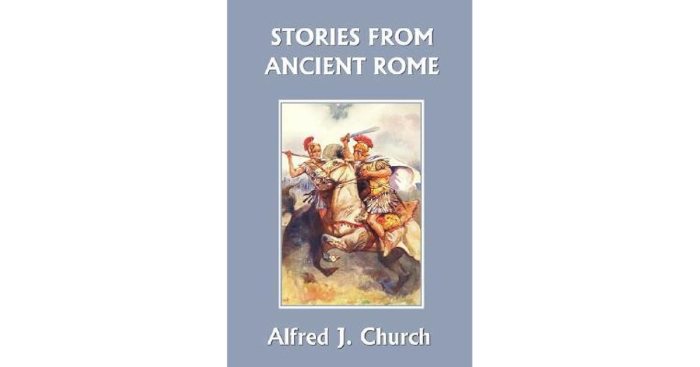
The Roman Empire was ruled by a succession of emperors who played a pivotal role in shaping its history and legacy. These emperors oversaw the expansion of the empire, the development of its political and social institutions, and the rise and fall of its civilization.
Key Roman Emperors
The following table summarizes some of the most influential Roman emperors, along with their dates of reign and significant accomplishments:
| Name | Dates of Reign | Significant Accomplishments |
|---|---|---|
| Augustus | 27 BC
| – Established the Roman Empire
|
| Nero | 54
| – Great Fire of Rome
|
| Constantine | 306
| – Converted to Christianity
|
Influential Roman Emperors
Some of the most influential Roman emperors include:
Augustus
Augustus (63 BC – 14 AD) was the first Roman emperor and is considered one of the most successful. He established the Roman Empire after the fall of the Roman Republic and ushered in a period of peace and prosperity known as the Pax Romana.
Augustus also reformed the Roman government, army, and legal system.
Amidst the captivating tales of Rome, one culinary delight that stands out is slatimbocca . This exquisite dish, featuring tender veal wrapped in prosciutto and sage, evokes the rich flavors of the Eternal City. Its origins can be traced back to the humble kitchens of Roman trattorias, where chefs sought to create a dish that showcased the region’s culinary heritage.
Slatimbocca, with its tantalizing combination of flavors and textures, has since become an integral part of the stories of Rome, a culinary masterpiece that embodies the spirit of the city.
Nero
Nero (37 – 68 AD) was a notorious emperor known for his extravagance, cruelty, and paranoia. He is believed to have ordered the Great Fire of Rome in 64 AD and persecuted Christians. Nero’s reign was marked by political instability and social unrest.
Constantine
Constantine (272 – 337 AD) was a pivotal figure in the history of the Roman Empire. He converted to Christianity in 312 AD and legalized it in the empire, paving the way for its eventual dominance. Constantine also moved the capital of the empire from Rome to Constantinople.
Roman Architecture and Engineering
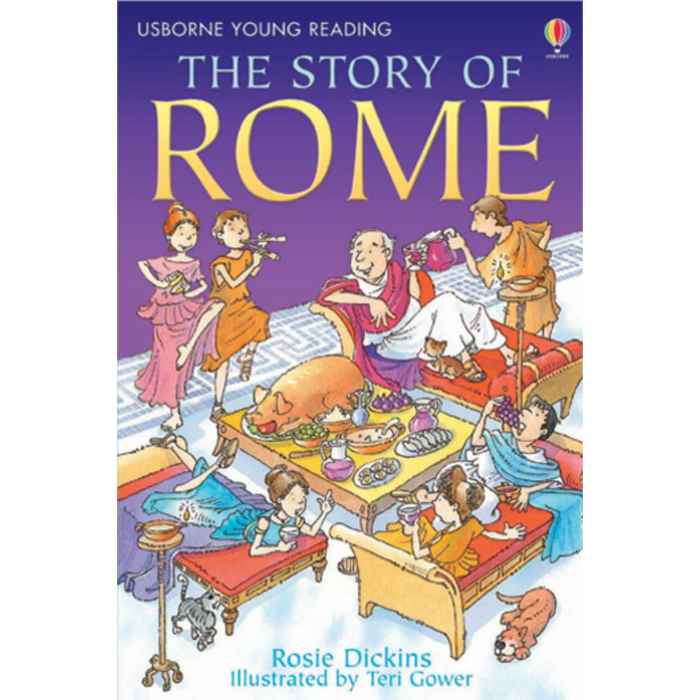
The Romans were renowned for their architectural achievements, which showcased their innovative use of materials and construction techniques. Their mastery of concrete, arches, and domes allowed them to create awe-inspiring structures that have endured for centuries.
Architectural Innovations
The Romans made significant advancements in architectural engineering, particularly with the development of concrete. By mixing volcanic ash, lime, and water, they created a durable and versatile material that could be molded into various shapes. This innovation revolutionized Roman architecture, enabling them to construct massive structures such as aqueducts, bridges, and amphitheaters.
Iconic Structures
Among the most iconic Roman structures is the Colosseum, an elliptical amphitheater that could accommodate over 50,000 spectators. Its intricate design featured multiple levels of seating, supported by a network of arches and vaults. The Pantheon, another architectural marvel, is a circular temple with a massive concrete dome that remains the largest unreinforced concrete dome in the world.
Aqueducts
The Romans were also skilled in hydraulic engineering, as evidenced by their construction of aqueducts. These monumental structures transported water from distant sources to cities and towns, providing a vital resource for sanitation, drinking, and irrigation. The Aqua Claudia, one of Rome’s most impressive aqueducts, spanned over 90 kilometers and supplied the city with fresh water for centuries.
Roman Art and Literature
Roman art and literature were influenced by both Greek and Etruscan cultures, as well as by the Romans’ own unique experiences and values. Roman art is known for its realism, its use of perspective, and its grand scale. Roman literature is known for its eloquence, its wit, and its moralizing tone.
Sculpture
Roman sculpture was often used to commemorate victories, celebrate important events, and honor gods and emperors. Roman sculptors were skilled in creating realistic portraits, as well as idealized figures of gods and heroes. Some of the most famous Roman sculptures include the Augustus of Prima Porta, the Dying Gaul, and the Laocoön and His Sons.
Painting
Roman painting was often used to decorate the walls of homes and public buildings. Roman painters used a variety of techniques, including fresco, tempera, and mosaic. Roman paintings often depicted scenes from mythology, history, and everyday life. Some of the most famous Roman paintings include the frescoes from the Villa of the Mysteries in Pompeii and the mosaics from the Baths of Caracalla.
As you wander through Rome’s ancient streets, its rich history whispers tales of emperors, gladiators, and artists. From the iconic Colosseum to the awe-inspiring Vatican City, Rome’s landmarks offer a glimpse into its glorious past. But beyond these iconic destinations, Rome offers a plethora of experiences to immerse yourself in its vibrant culture.
Discover hidden gems, savor authentic Italian cuisine, and explore the city’s charming neighborhoods. For an insider’s guide to the Eternal City, visit what to do in rome . Let Rome’s stories captivate you and create memories that will last a lifetime.
Mosaics
Mosaics were a popular form of art in the Roman Empire. Mosaics were made by gluing small pieces of colored glass, stone, or ceramic onto a surface. Roman mosaics were often used to decorate floors, walls, and ceilings. Some of the most famous Roman mosaics include the Alexander Mosaic from the House of the Faun in Pompeii and the Nile Mosaic from the Villa Adriana.
Literature
Roman literature was written in Latin and was influenced by both Greek and Etruscan literature. Roman literature includes a wide variety of genres, including poetry, drama, history, and philosophy. Some of the most famous Roman writers include Virgil, Ovid, Cicero, and Seneca.
Virgil
Virgil was a Roman poet who lived from 70 to 19 BC. He is best known for his epic poem the Aeneid, which tells the story of the Trojan hero Aeneas and his journey to Italy. The Aeneid is one of the most important works of Roman literature and has been widely imitated and translated throughout history.
Ovid
Ovid was a Roman poet who lived from 43 BC to 17 AD. He is best known for his poem the Metamorphoses, which tells the stories of over 250 mythological transformations. The Metamorphoses is a popular work of Roman literature and has been widely read and translated throughout history.
Cicero
Cicero was a Roman orator, statesman, and philosopher who lived from 106 to 43 BC. He is best known for his speeches and his philosophical works. Cicero’s speeches are considered to be some of the finest examples of Roman oratory, and his philosophical works are still widely read and studied today.
Seneca
Seneca was a Roman philosopher, statesman, and dramatist who lived from 4 BC to 65 AD. He is best known for his philosophical works, which include essays on ethics, politics, and the nature of the universe. Seneca’s works are still widely read and studied today.
Roman Social and Cultural Life
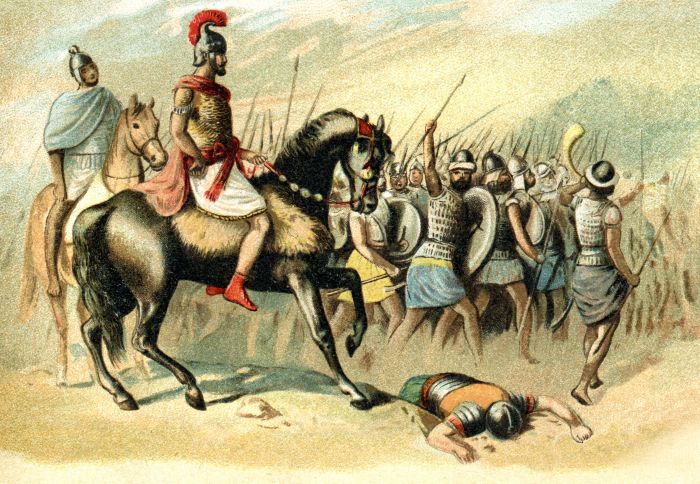
Roman society was highly structured and hierarchical, with citizens enjoying greater privileges than non-citizens and slaves. The family was the cornerstone of Roman society, and the paterfamilias (father) held absolute authority over his wife, children, and slaves.
Daily life for most Romans revolved around work, family, and leisure activities. The wealthy elite enjoyed a life of luxury, while the poor often struggled to make ends meet. Entertainment played a major role in Roman culture, with gladiatorial contests and chariot races being particularly popular.
Social Classes, Stories of rome
Roman society was divided into three main social classes: the patricians, the plebians, and the slaves.
- Patricianswere the descendants of the original Roman families and held the highest positions in society.
- Plebianswere commoners who made up the majority of the population. They had fewer rights than patricians but could still vote and hold public office.
- Slaveswere the lowest class in Roman society and had no rights. They were often captured in war or born into slavery.
Family Structure
The Roman family was patriarchal, meaning that the father had absolute authority over his wife, children, and slaves. The paterfamilias could arrange marriages for his children, sell them into slavery, or even kill them.
Roman women had few rights and were expected to be subservient to their husbands. They could not own property or vote, and they were often confined to the home.
Daily Life
Daily life for most Romans revolved around work, family, and leisure activities.
- Work:Most Romans worked in agriculture, trade, or crafts. The wealthy elite often owned large estates and employed slaves to work their land.
- Family:The family was the center of Roman life. Romans spent much of their time with their families, eating meals together, playing games, and attending religious ceremonies.
- Leisure activities:Romans enjoyed a variety of leisure activities, including attending gladiatorial contests, chariot races, and theatrical performances. They also enjoyed bathing, playing games, and reading.
Entertainment
Entertainment played a major role in Roman culture. The most popular forms of entertainment were gladiatorial contests and chariot races.
- Gladiatorial contestswere bloody spectacles in which armed men fought to the death. Gladiators were often slaves or criminals who were forced to fight for their lives.
- Chariot raceswere another popular form of entertainment. Chariots were pulled by horses and raced around a track. Chariot racing was a dangerous sport, and many drivers were killed or injured.
The Fall of the Roman Empire
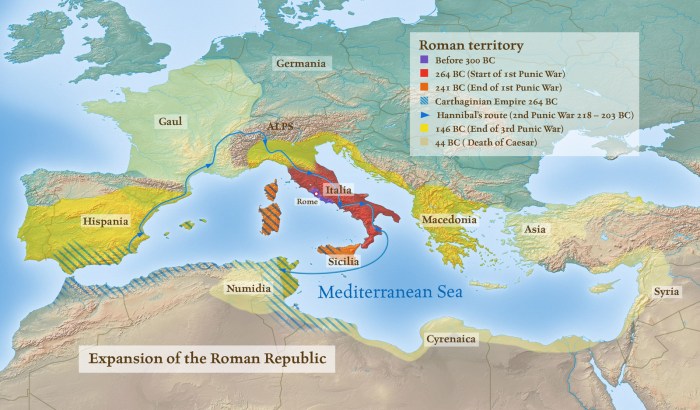
The Roman Empire, once the most powerful and influential civilization in the world, eventually declined and fell. This decline was a complex process that spanned centuries and involved a multitude of factors. Political instability, economic decline, social unrest, and military overextension all played a role in the empire’s eventual collapse.
Political Instability
Political instability was a major factor in the decline of the Roman Empire. The empire was plagued by a series of weak and incompetent emperors who were unable to maintain control over the vast territory. This led to a decline in central authority and an increase in regionalism.
The empire was also divided by civil wars, which further weakened its political stability.
Economic Decline
The Roman Empire also experienced a period of economic decline in the centuries leading up to its fall. The empire’s economy was based on slavery, and the decline of slavery led to a decline in economic growth. The empire also faced competition from other civilizations, such as the Persians and the Chinese, which further weakened its economy.
Social Unrest
Social unrest was another major factor in the decline of the Roman Empire. The empire was plagued by a series of social problems, such as poverty, unemployment, and crime. These problems led to a decline in morale and a loss of faith in the empire.
The empire also faced a series of religious conflicts, which further weakened its social fabric.
Military Overextension
The Roman Empire was also weakened by military overextension. The empire’s borders were constantly under attack from barbarian tribes, and the empire was forced to spend a large amount of its resources on defense. This led to a decline in the empire’s military strength and an increase in its vulnerability to attack.
Final Review: Stories Of Rome
Through the lens of stories of Rome, we gain a profound appreciation for the enduring legacy of this ancient civilization. Its architectural marvels, artistic masterpieces, and social innovations continue to inspire and fascinate, reminding us of the enduring power of human ingenuity and the timeless lessons that history holds.
